Discovering Our Seas – The Vibrant South Coasts of Singapore
Published
May 19, 2023
By
Neo Xiaoyun
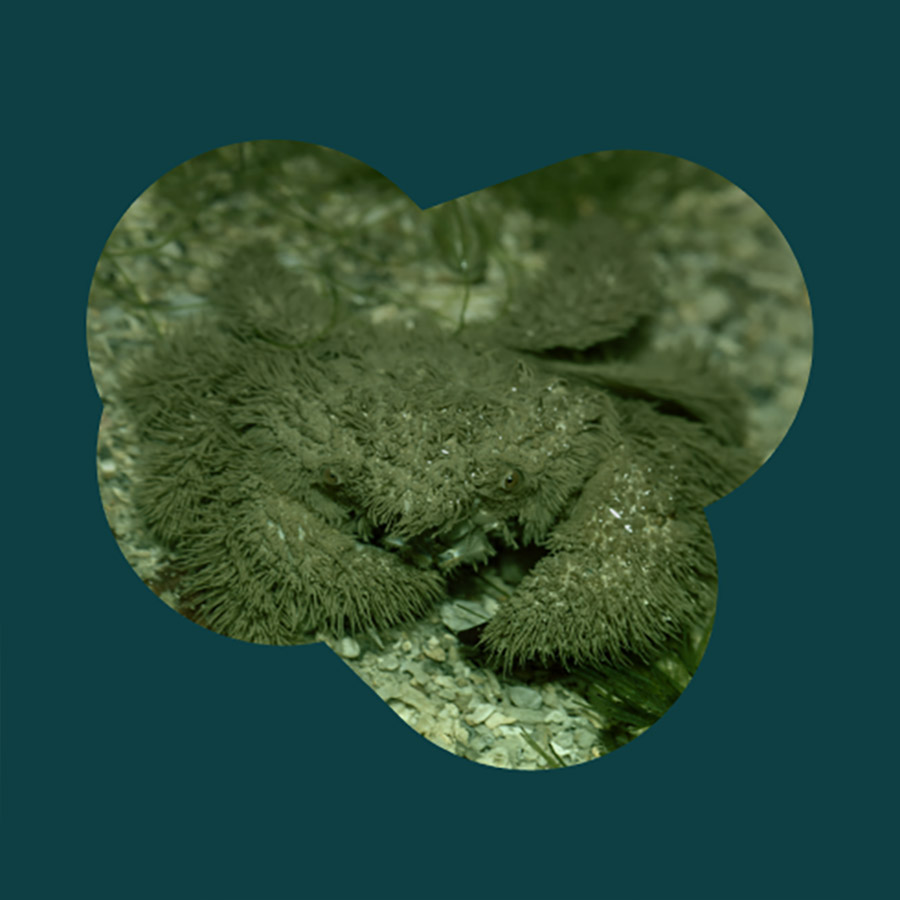
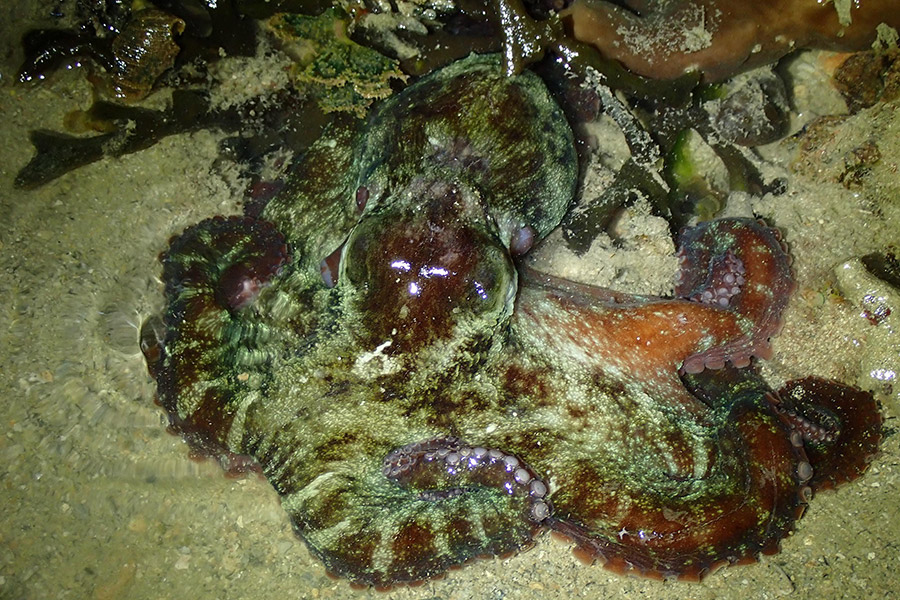
In this two-parter (see part one here), I continue sharing about the vast biodiversity found in our island’s limited intertidal zones and the different environmental conditions facing each side. In the South, with reduced influx of freshwater from the 50-kilometres-long Johor River, the seawater is more saline and clearer.
Another environmental factor that our South coasts experience less of is the pressure of large cargo ships. Ships pass by closer to shore in the North, given the narrower Straits between Singapore and Malaysia (you can sometimes see Malaysia from the breakwaters on Changi and Pasir Ris). In contrast, in the South, there is more space for ships to cruise further from shore, meaning that waters are less silty with fewer particles churned up by the movement of ships through the waterways.
These conditions are more favourable for corals and anemones, together with the marine animals that live in and depend on them.
Clearer waters for corals
Land reclamation and coastal development has reduced coral coverage by about 65% since the 1980s. Reclamation and development also resulted in murkier, more turbid waters especially in the North, which reduced sunlight penetration from 10metres in the 1960s to about 2metres presently.
Reduced sunlight penetration in the waters is significant for marine creatures that house microscopic symbiotic algae (called zooxanthelle) in their bodies, which includes hard corals, anemones and even some clams. While these creatures are carnivores, the zooxanthelle that they harbour in their bodies also offer an important, additional source of nutrients, by making food and sharing food with its coral/anemone/clam host. To accommodate the increased silt and reduced sunlight penetration, corals, anemones and clams are thus growing in smaller, limited areas (in the shallows) and are more restricted to the South Coasts of Singapore.
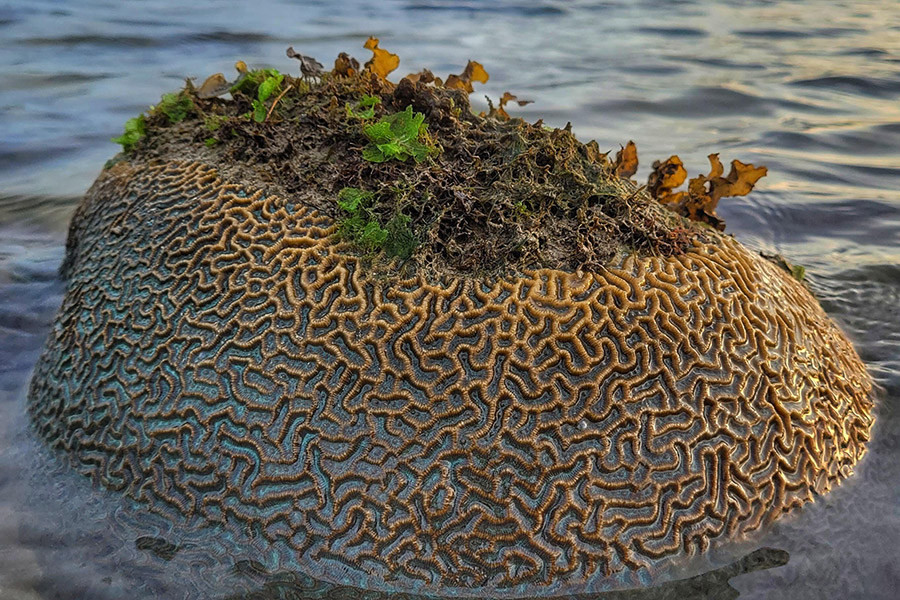
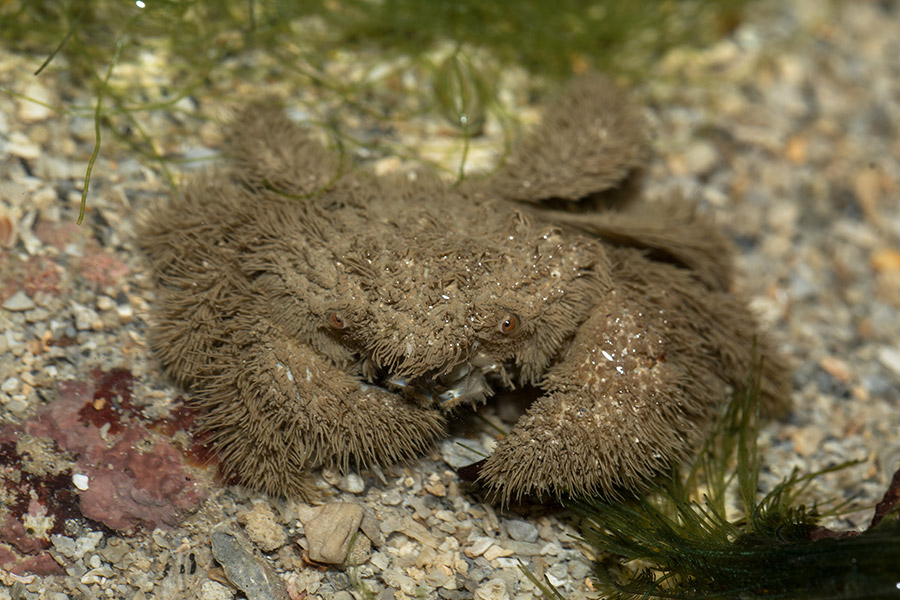
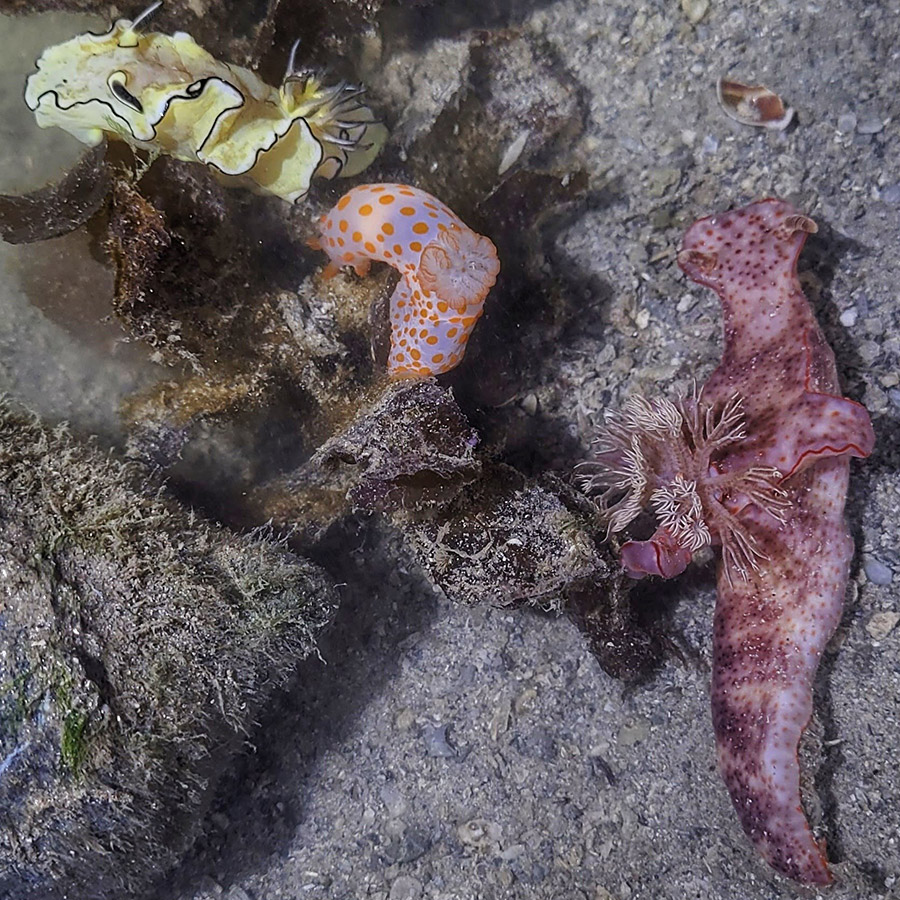
Nudibranchs may be encountered on many of our shores, especially near reefs, coral and rocky shores. This is because these habitats are conducive for the nudibranchs’ prey — sponges, sea slugs, tiny crustaceans, barnacles, ascidians, eggs of other marine creatures, other encrusting animals, and even corals and anemones themselves. Across the world, the greatest species diversity of nudibranchs is seen in warm, shallow reefs.
Associating with the Anemone
Think of corals and anemones as the “trees” of the ocean in that they are also often associated with several other marine creatures (But they also aren’t “trees” per se because they are in fact animals, being the cousins of jellyfish). In the case of anemones, we often find anemone shrimps (Periclimenes sp.), fishes such as anemonefishes (Amphiprion sp.) around, and porcelain crabs (Neopetrolisthes sp.)
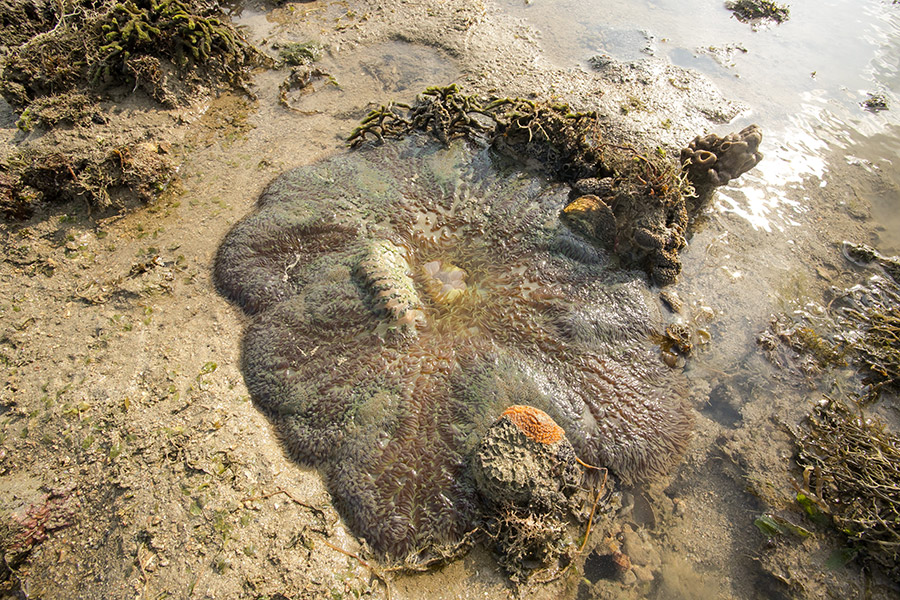
Giant carpet anemone (Stichodactyla gigantea) are the larger cousins of carpet anemones found in the North coasts. Typically growing 40-50 centimeters, they harbour symbiotic photosynthesing zooxanthelle, and dwell in shallow waters. This anemone might have been an opportunistic hunter of creatures left “stranded” on the sand bank, as the tide receded. As the anemone lacks an anus, it has to spit out any indigestible bits through the mouth, which may explain the clam shells seen near its mouth.
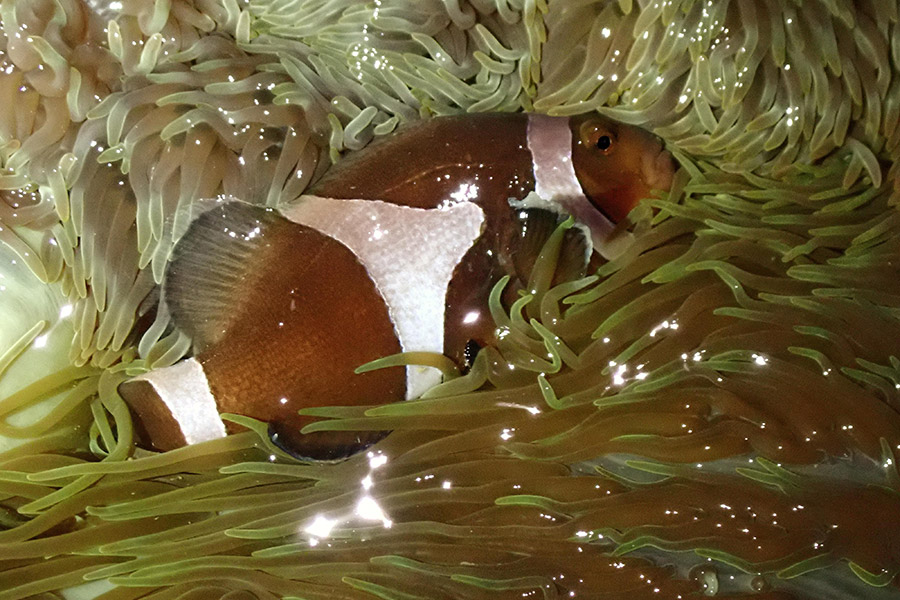
The false clown anemonefish (amphiprion ocellaris), made famous by the movie Finding Nemo, is commonly seen in large anemones. The anemone provides protection for the fish, while the fish secretes mucus that enables it to withstand the poisonous stings of anemone. When clownfish initially hatch, they reside near the surface, travelling downwards as they mature to seek shelter in a host anemone. It is postulated that the fanning behavior of the clownfish and removal of parasites promotes the health of sea anemones.
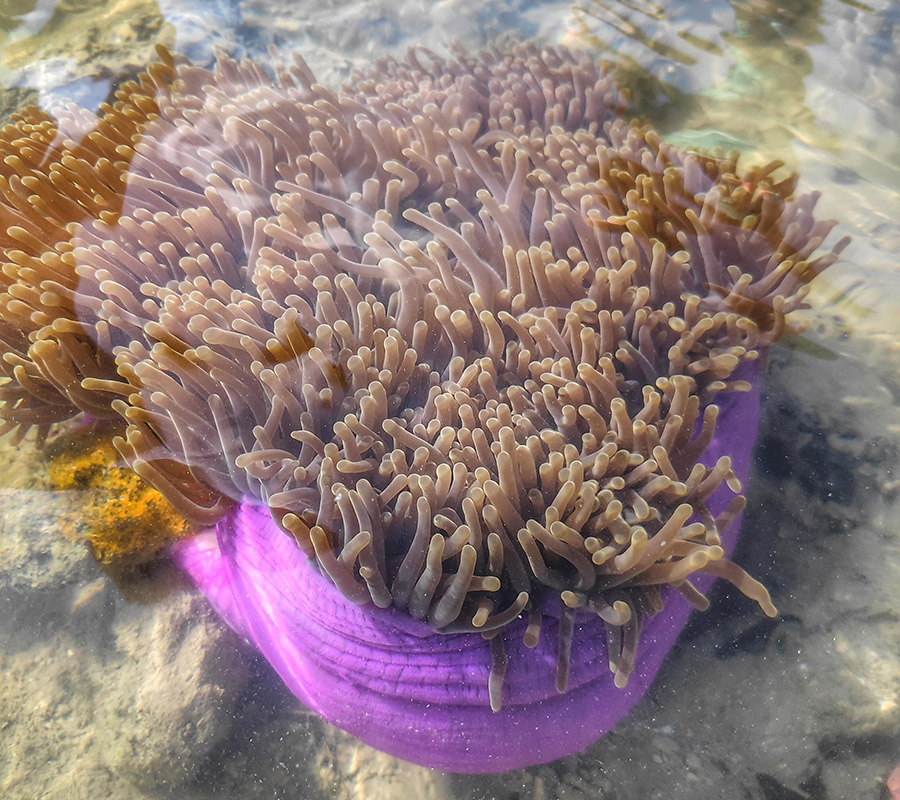
Final words
Our southern islands are less visited and explored, due to the distance from mainland Singapore and the relocation of most Southern islanders. But this is not a condition facing only the southern islands.
In general, the sea has receded from most of our lives and memories in Singapore, with the erasure of sites and ocean-based livelihoods. Many Singaporeans question the benefits of marine conservation because they believe the surrounding waters are already devoid of life. For me, this is a sad state to describe the people of a nation of 64 islands. Perhaps, though, there could be ways and means to relate to, and re-connect with our marine environments, both culturally and ecologically. For me, it is the varied and amazing biodiversity from the North to South—the wide spectrum of different creatures to spot and appreciate—that have provided endless hours of education, entertainment, wonder and fascination… and which have kept me coming back. Though I’m not as directly entangled in the marine ecosystem as a kelong fisherman, shrimp farmer or southern islander, for me, it is a start.

